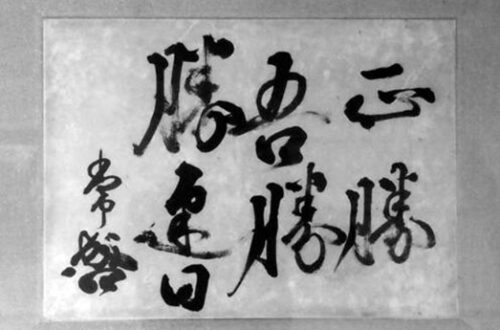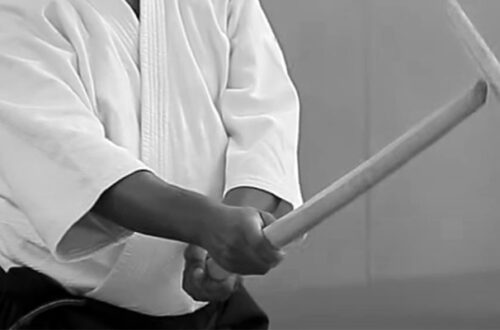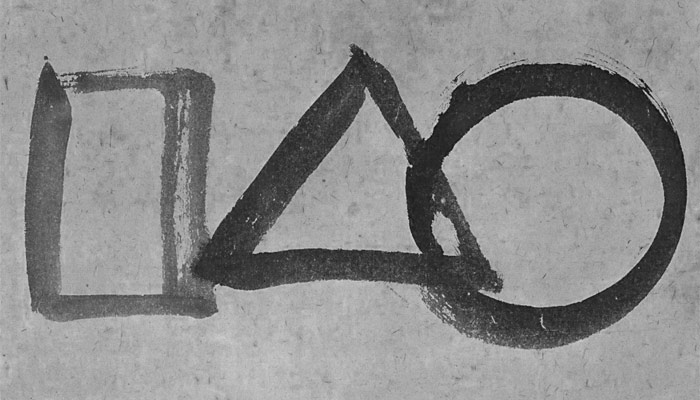
Sangen – The Triangle, Circle and Square in Aikido
The founder of Aikido, Morihei Ueshiba, used the symbols of the triangle, circle, and square (△ ○ □) to convey key philosophical concepts central to Aikido. These symbols represent the Sangen 三元 in the Shinto concept of Ichirei Shikon Sangen Hachiriki 一霊四魂三元八力, a framework used to explain the nature of the universe. While a detailed explanation of this concept is beyond the scope of this article, its basic understanding is as follows: Ichirei is the One Spirit, the single source of creation that forms all existence. Shikon refers to the four souls 奇霊, 荒霊, 和霊, 幸霊, which represent Wisdom 智, Bravery 勇, Intimate/Close 親 and Love 愛. Hachiriki refers to the eight powers that shape the world, which we will not delve into here.
The Sangen are the three kami 造化三神 responsible for creating heaven and earth:
- 生霊 is associated with the continuous cycle of birth, death, and rebirth.
- 足霊 symbolizes plentifulness and abundance.
- 玉留霊 is linked to completion and stability.
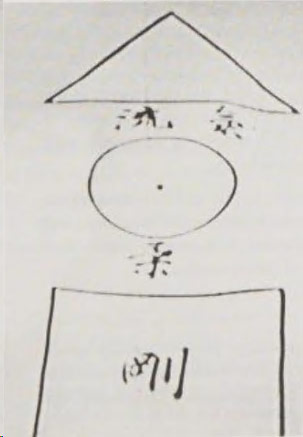
Sangen – Ki Flow 気・流 , Softness 柔 and Hardness 剛
Ueshiba also explained Sangen with the three symbols △ ○ □. △ represent Ki Flow 気・流, from which ○, symbolizing Softness 柔, and □, symbolizing Hardness 剛, are born. When these elements align, they give shape to the entire universe.
These symbols can also be understood through the concept of Musubi 結び, which refers to the force or energy that brings different entities together. In common Shinto practice, Musubi is symbolized by the binding of Shimenawa 標縄 (sacred ropes) around trees, rocks, and other natural objects to signify their connection with the kami. Musubi can also be presented as Mizuhiki 水引, a ceremonial knot used in Japanese culture to symbolize unity and harmony. In a similar way, the Sangen bind and connect everything in the universe, creating harmony and forming the world as we know it.
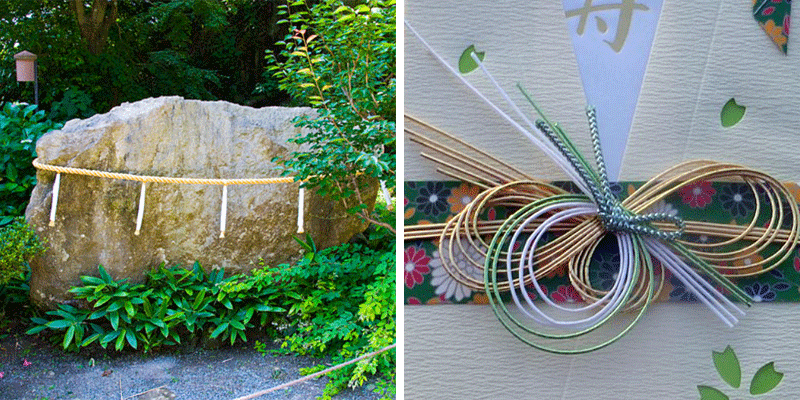
Shimenawa and Mizuhiki in Japanese culture
In the context of Aikido, these symbols can be understood as the progression of an Aikido technique:
- △ symbolizes entering the opponent’s space from a stable stance, positioning oneself to control the opponent’s potential movements.
- ○ symbolizes blending in and evading with circular motion, avoiding direct confrontation or the collision of forces.
- □ represents settling and finishing, controlling the opponent and bringing the confrontation to a resolution.
Ueshiba’s teachings are conveyed in the book The Art of Peace, where it is stated:
“The body should be triangular, the mind circular. The triangle represents the generation of energy and is the most stable physical posture. The circle symbolizes serenity and perfection, the source of unlimited techniques. The square stands for solidity, the basis of applied control.”
Ueshiba also provided other insights into these symbols on various occasions, making their full comprehension challenging. Here are a few more quotes from the founder:
- “The circle symbolizes the spirit of harmony, the triangle symbolizes the spirit of progress, and the square symbolizes the spirit of solidity.”
- “The triangle represents the points where the spiritual, mental, and physical sides meet and the energy generated when these three points unite. The circle represents the infinite possibilities of unity and harmony, while the square represents the solid foundation of physical strength.”
- “The square is a symbol of stability and a solid foundation. It represents the earth, which is firm, solid, and dependable. This is why we use a square stance in Aikido, to ensure a strong foundation for our movements. But we must remember that the square is incomplete without the circle. It is the circle that gives life and movement to the square, just as our spirit gives life and movement to our techniques.”
In conclusion, these symbols carry profound meaning, both from a religious and Aikido perspective. Understanding them provides Aikido practitioners with a glimpse into Ueshiba’s cosmological view and the very essence of Aikido.
Author’s Note: We appreciate your readership! This article serves as a preliminary introduction to the subject matter. While we aim for accuracy, we cannot guarantee the content’s precision and it may contain elements of speculation. We strongly advise you to pursue additional research if this topic piques your interest. Begin your AikidoDiscovery adventure! 🙂


